It’s real, it’s happening and it’s caused by human activity. Climate change has already started showing its effects around the world. From extreme weather to rising sea levels, climate change is already upon us — and there’s an overwhelming body of scientific evidence demonstrating it.
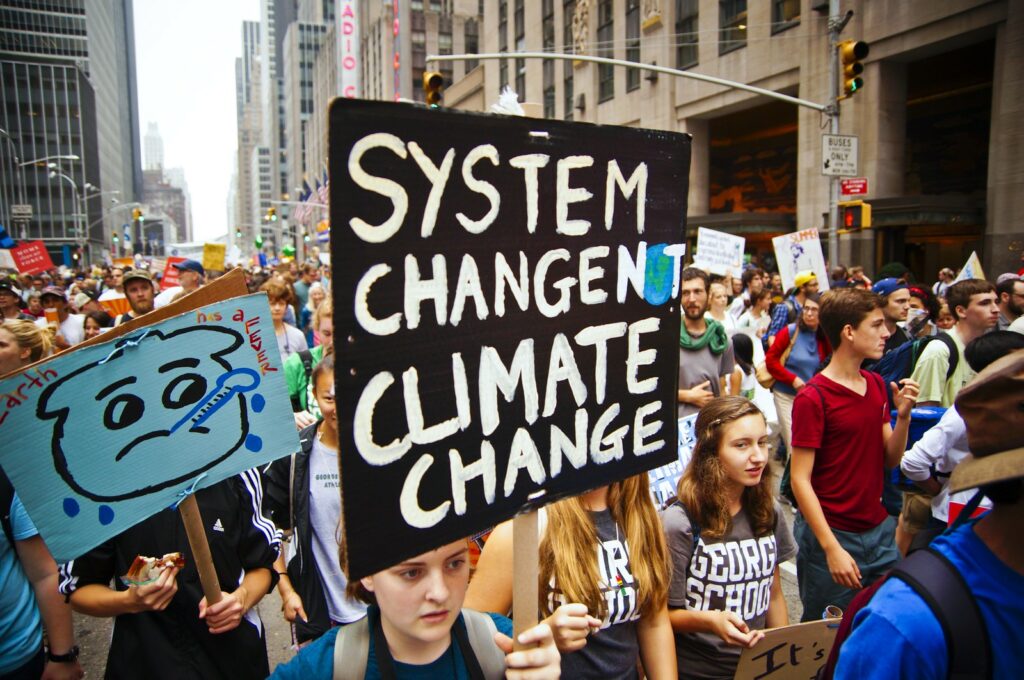
What exactly is climate change and how are man-made greenhouse gases causing it? Who is to blame for this and how can we tackle it? Should we tackle it? We’ll take a dive into all these questions and many others to provide an accurate look into the facts and figures behind the world’s greatest challenge.
A changing planet
First of all, climate shouldn’t be confused with the weather. Climate is the general weather conditions of a place over many years — it’s essentially a long-term average of weather.
Climate change, therefore, isn’t a hot day or a hot summer. It’s a significant variation of average weather conditions over several decades or more. The longer-term trend is what differentiates climate change from natural weather variability.
Climate change also isn’t necessarily an artificial process — this climate change is, but there have been many previous climate change events throughout Earth’s history.
The Earth has had seven cycles of glacial advance and retreat over the last 650,000 years, with the last ice age ending about 11,700 years ago and marking the start of the modern climate era.
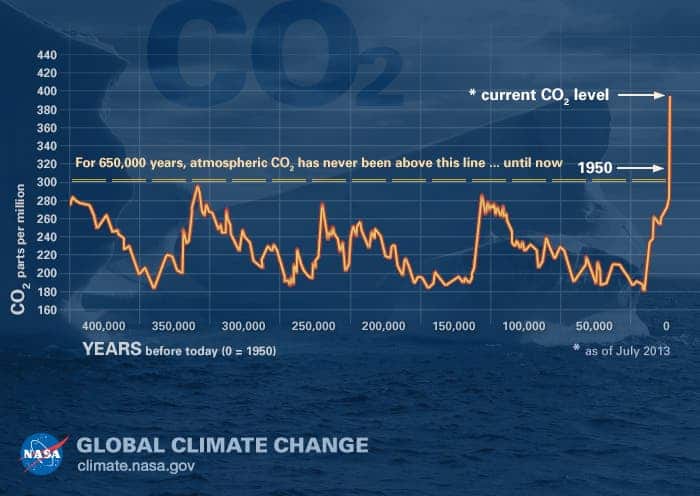
Most of these climatic changes are linked to variations in Earth’s orbit, changing the amount of solar energy the planet gets. Other events like volcanic eruptions or large meteorite impacts can also affect the planet’s climate — but that’s not the case with the current warming trend. It’s essentially clear (>95% certainty) that this is the result of human activity.
Humans are the driving force behind the changing climate of the planet; specifically, it’s the greenhouse gases that we’ve been producing for the past century and a half. Carbon dioxide (CO2) is responsible for most of the global warming we are causing, with methane (CH4) and nitrous oxide (N2O) behind it.
It works like this. The Earth’s atmosphere absorbs some of the Sun’s energy, and reflects some of it away. The amount that is absorbed/reflected depends on the chemical make-up of the atmosphere. The more greenhouse gases there are in the atmosphere, the more energy is absorbed, thus causing the atmosphere (and the planet itself) to heat up.
This is called the greenhouse effect.
The amount of greenhouse gases that we generate has skyrocketed in recent decades, and this shows in the atmospheric composition. Concentrations of CO2, CH4, and N2O have increased to “unprecedented levels” in the last 800,000 years, according to the Intergovernmental Panel on Climate Change (IPCC).
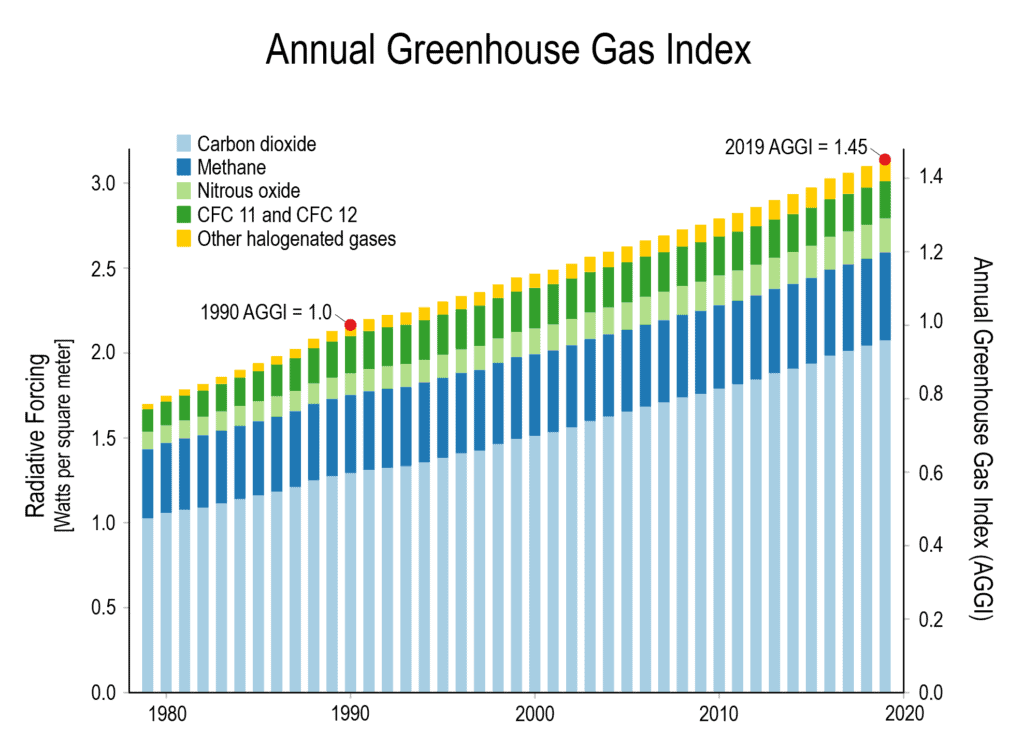
- Carbon dioxide (CO2). It’s released through natural processes such as volcanic eruptions and also through human activities such as burning fossil fuels. It’s the most important man-made greenhouse gas — although it’s not the most potent of the greenhouse gases, it’s long-lived and very abundant.
- Methane (CH4). It’s a hydrocarbon gas produced by natural sources and human activities such as agriculture. It’s much more active than CO2 on a molecular basis but also less abundant in the atmosphere.
- Nitrous oxide (N20). It’s a very powerful greenhouse gas, caused by soil cultivation practices such as the use of fertilizers, biomass burning, and fossil fuel combustion. It’s 300 times more potent than CO2 but it’s produced in lower quantities than CO2 and stays in the atmosphere for 114 years, while CO2 can remain for up to 1000 years.
- Water vapor. It accounts for the largest percentage of the greenhouse effect, but it isn’t directly affected by human activity (at the global scale, at least). It increases as the Earth’s atmosphere warms, but so does the possibility of clouds and precipitation. Human activity is altering water vapor circulation, but this is not usually considered a cause of global warming, rather a reinforcement mechanism.
- Chlorofluorocarbons (CFCs). They are synthetic compounds of industrial origin used in many applications. They are now regulated in production and release to the atmosphere by an international agreement.
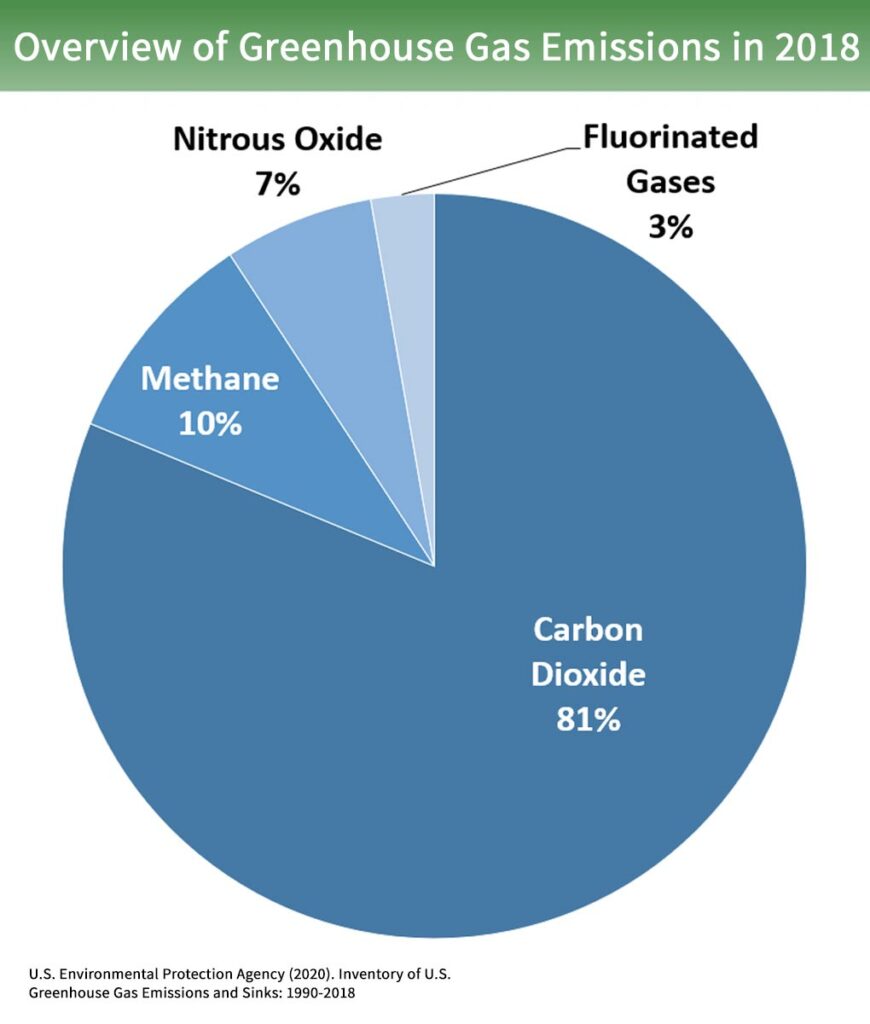
This is proven by a large body of data collected over the years by scientists and climate experts, who can now get the big picture thanks to satellites orbiting around the Earth and other technological advances. And even predict future trends, using climate models, an extension of weather forecasting.
The global warming trend seen since the mid-20th century is linked to the human expansion of the greenhouse gas effect, which happens when the atmosphere traps heat radiating from the Earth. While this is important in keeping the planet warm enough to inhabit, greenhouse gases in the atmosphere have skyrocketed in recent decades.
How we know it’s humans
We’ve said it before: climate change has happened in the past, far before humans emerged on Earth. The very emergence of photosynthesis is thought to have caused a major climate change event, more than 2 billion years ago. So how do we know it’s humans that are causing it now, or that it’s even happening?
For starters, it’s abundantly clear that temperatures are rising. We’ve been measuring temperatures for over a century, with increasing coverage and precision. Climate change isn’t uniform — some places can heat up dramatically, while others can heat up far less, or even cool down a bit. But we have enough global temperature mapping to say with certainty that, on average, temperatures are increasing significantly and steadily. According to the NOAA (which is just one of the many sources with similar data), the combined land and ocean temperature has increased at an average rate of 0.07°C (0.13°F) per decade since 1880. In recent decades, the average rate of increase has more than doubled to 0.18°C (0.32°F) per decade.
To see what’s causing this warming, we only need to look a bit further.
The first big clue comes from the extra greenhouse gases in the atmosphere. We can measure these emissions in two ways: we either measure them directly (with satellites, for instance) or we calculate approximately how much emissions our activities produce (which we can do with decent accuracy). All the existing data shows that greenhouse gases (and CO2 especially) are rising spectacularly. We’ve just passed a landmark 400 parts per million concentration of atmospheric CO2 — from about 280 before the industrial revolution. That’s a whopping 46% increase.
This doesn’t mean that temperatures also increase by 46%. Emissions of greenhouse gases are normally balanced out to a natural equilibrium. As a result, greenhouse gas concentrations and temperatures have been fairly stable for a long time. This is no longer the case as carbon sinks such as the planet’s forests and oceans can’t simply keep up with the growing emissions of CO2. But CO2 isn’t the only greenhouse gas, and the processes that govern climate change are more complex, so while the correlation is definitely there, it’s not a perfect correlation.
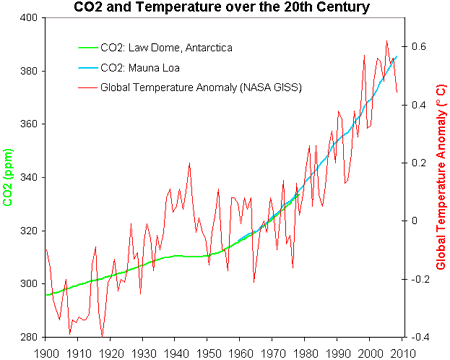
This has already been known for a while. Despite what some would have you believe, scientists have known that human activities are driving climate change, but communicating this has proven to be a bumpy road. It’s a bit like the smoking-cancer connection: it took decades for people to follow the scientific evidence rather than the disinformation campaign by lobby groups.
To put it this way, man-made global warming looks like a duck, walks like a duck, and quacks like a duck. We may not know exactly how big its eyes are or how many feathers it has, but it’s definitely a duck.
The IPCC, which groups global climate experts, concluded in its Fifth Assessment Report from 2014 that there’s a more than 95% probability that human activities over the past 50 years have warmed our planet, rising atmospheric CO2 levels from 280 parts per million to 414 parts per million in the last 150 years.
The main source of human greenhouse emissions is the burning of fossil fuels such as coal and gas (for electricity, heat, and transportation). Deforestation ranks second, releasing sequestered carbon into the air. Other activities that generate emissions are fertilizer use, livestock production, and some industrial processes.
While humans are the main factor influencing the Earth’s climate, it’s not the only one. Variation in solar radiation, the Earth’s position relative to the sun, volcanic eruptions and large-scale weather patterns such as El Niño can also drive changes in the climate of the planet. But their significance is much lower than that of human activities, and in fact, analyses have suggested that over the past centuries, natural factors were actually causing a slight climate cooling — which emphasizes even more that we’ve been overheating the planet.
We’re already seeing the effects

When many adults were growing up, it seemed that global warming was something far away to be dealt with by future generations. That’s not the case.
While it may seem we have plenty of time to deal with its consequences, climate change has already become a severe problem across the world, with observable effects all over the place. The world is already 1ºC warmer than before industrialization, with the 20 warmest years on record all happening within the past 22 years.
More than 90% of the warming that happened on Earth between 1971 and 2010 occurred in the ocean, according to the State of the Climate report. Increasing ocean heat content is contributing to sea-level rise, ocean heatwaves and coral bleaching, and melting of ocean-terminating glaciers and ice sheets.
The acidity of surface ocean waters has increased by about 30% since the beginning of the industrial revolution. This is the result of increasing emissions of CO2 into the atmosphere and more being absorbed into the oceans. The amount of CO2 absorbed by the upper layer of the oceans is increasing by about 2 billion tons per year.
Across the globe, sea level rose about 8 inches (20cm) in the last century. The rate over the last two decades has been almost double that of the last century and is accelerating slightly every year. This has been driven by an increase in water volume as it heats up but also by the retreat of glaciers around the world.
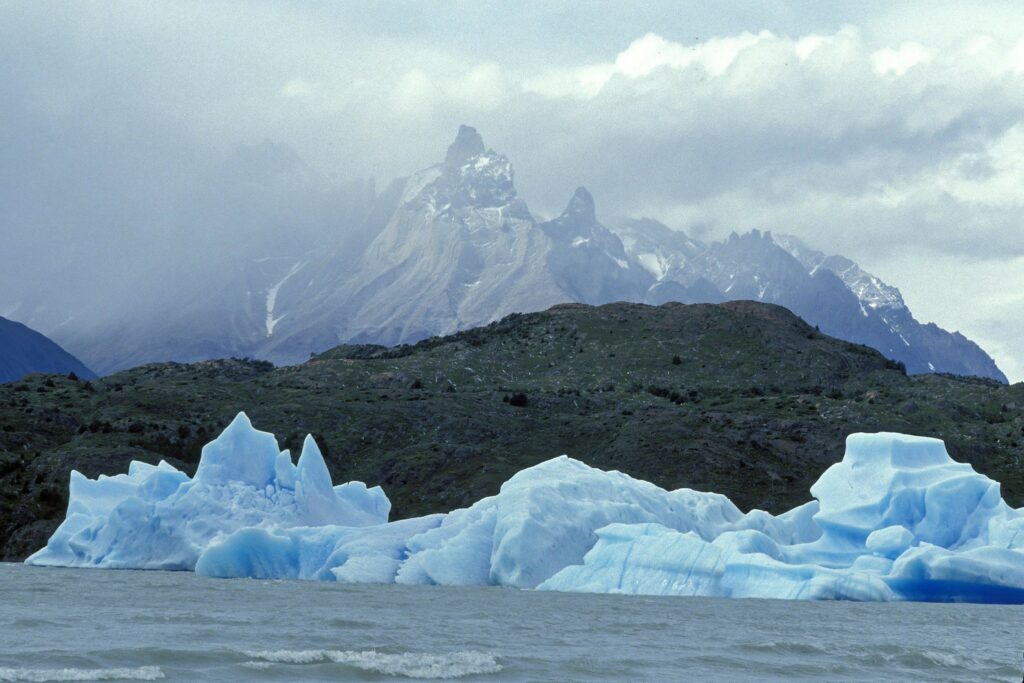
Worldwide, most glaciers are shrinking or disappearing altogether. Between 1980 and 2018, glaciers tracked by the World Glacier Monitoring Service have lost ice equivalent to 21.7 meters of liquid water, the equivalent of cutting a 24-meter (79-foot) thick slice off the top of each glacier.
Ice sheets in Greenland and Antarctica have significantly decreased in mass. Greenland lost an average of 286 billion tons of ice per year between 1993 and 2016, while Antarctica lost about 127 billion tons of ice per year during the same time period, according to NASA’s Gravity Recovery and Climate Experiment.
Finally, the number of record-high temperature events has been increasing, while the number of record low-temperature events has been decreasing. A map by Carbon Brief found that 69% of 355 extreme weather events and trends were made more likely or more severe by human-caused climate change.
All this is costing us in many ways. Increased heat, drought, declining water supplies, hurricanes, reduced agricultural yields, extreme weather, sea level rise, changing insect outbreaks, ecosystem destruction — to list just a few of the effects of climate change — are already taking a toll. From human health and famine to climate refugees, we’re already feeling the impact, and the effect is due to increase as time passes. It’s hard to put a price tag on climate change but according to recent studies, climate change has cost U.S. taxpayers more than $350 billion over the past decade, and if we look at hidden costs such as its health impact, that figure grows dramatically. But even that is peanuts compared to what’s to come. Climate change could cost the developed world up to 10% of its GDP a year, one analysis found.
The problem is you can’t just hit the brakes on climate change. Even if you somehow, magically stop all emissions today, you’d still witness a bit of heating over the next century. But the more we delay action, the greater the damage. The longer we wait, the more painful (and expensive) the consequences will be.
What can we expect for the future?
Scientists have a high level of confidence that global temperatures will continue to rise for decades to come. The IPPC predicts a temperature rise of 3ºC to 4ºC by the end of the century if the world follows its current trajectory. That’s why activists and experts call for further climate action.
The extent of the climate change effects on each region of the world will change over time, with some countries more capable than others of adapting to changes in weather patterns. Overall, the net damage costs of climate change are likely to be very significant and to increase over time, according to the IPCC.
Projections put sea level from 30 centimeters to 2.4 meters by 2100 as the result of added water from melting land ice and the expansion of seawater. This will be combined with high tides, land subsidence, and storm surges, increasing flooding in many parts of the world and even forcing climate migration.
The Arctic Ocean may become essentially ice-free in the summer before mid-century, according to a study published this year. Researchers analyzed results from 40 different climate models and in most of them, the Arctic sea-ice was reduced to less than a million square kilometers, a level that they described as practically sea-ice free.
How can we stop it?
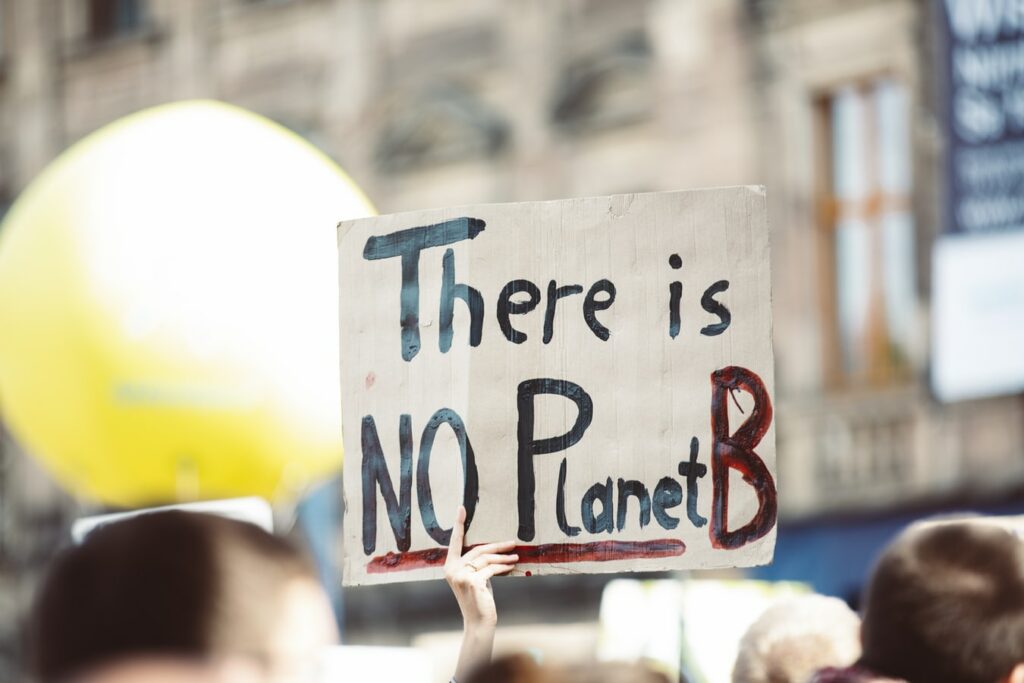
To stop a global challenge such as climate change, we need global cooperation and collaboration. There’s no real way around it.
In 2015, 195 countries committed to the Paris Agreement to limit global temperature rise to no more than 2°C above pre-industrial levels, doing everything within their power not to exceed a 1.5º temperature increase. Nevertheless, the initial pledges are insufficient to meet any of those targets and to make matters even worse, virtually all countries are failing in their commitments.
We’ve also seen how flimsy these commitments can be. All it takes is one administration that doesn’t care about climate change to take one step back instead of forward. Case in point: Donald Trump has withdrawn the US from the Paris Agreement. The president-elect has vowed to rejoin the agreement as soon as possible, but some damage has already been done.
But there’s still hope. As part of their commitment in Paris, countries have to update their climate pledges every five years and now it’s the time to do so. A few have already presented theirs but many are still pending. The Climate Action Tracker (CAT) regularly assesses countries’ climate pledges. Morocco, India, Costa Rica and the European Union are highlighted among the most ambitious ones, while China and the United Kingdom show some promise. On the bottom of the list ranks Russia, Saudi Arabia, and the United States.
Progress is also coming from other levels. A global covenant of mayors is offering a platform for cities to share initiatives, ideas, and support each other. The private sector can also support sustainable change, especially with a healthy policy in place.

Ultimately, all of us can make a significant difference. Individual behavior won’t save the world by itself, but if we support politicians and companies who are invested in climate change action, we can make a difference — and even a small difference could be crucial.
A temperature increase of 2ºC is considered the gateway to severe effects of climate change. If we could limit that to 1.5ºC, it could make a world of a difference.
At 1.5°C, over 70% of coral reefs will die, but at 2°C, almost all reefs will be lost, the IPCC projects. At the same time, with a warming of 1.5ºC versus 2ºC, the proportion of the population exposed to water scarcity due to climate change could be reduced by more than 50%.
This half of a degree could be pivotal for mankind and countless other species. But it won’t be easy. A report by the IPCC in 2018 said the 1.5ºC target would require “fast, far-reaching and unprecedented” changes. Whether or not we can accomplish these unprecedented changes remains to be seen.


